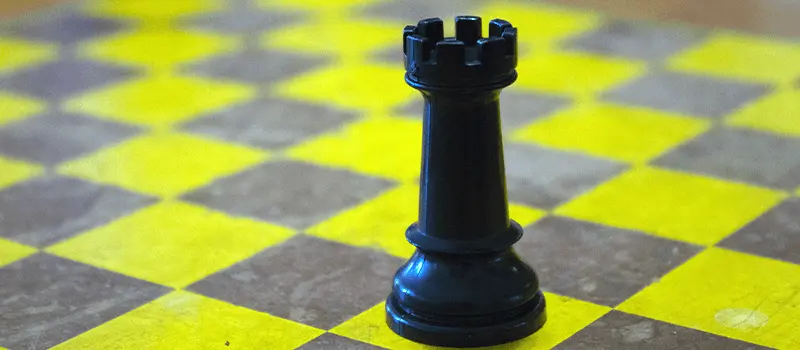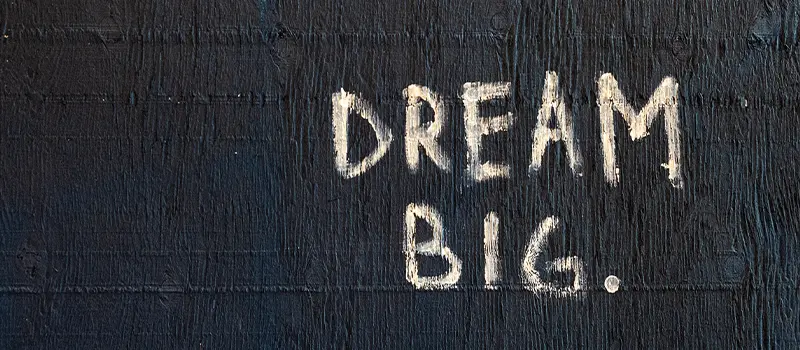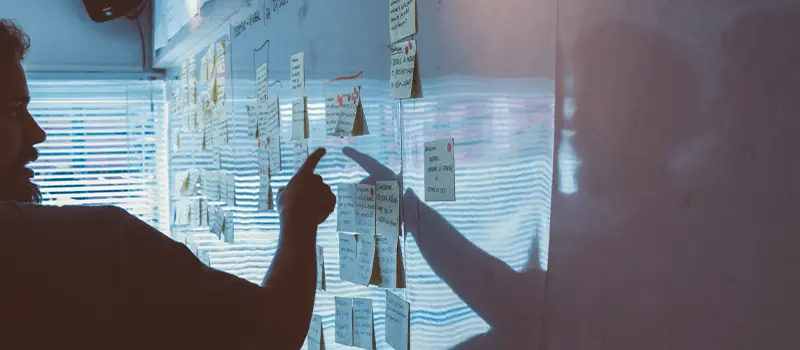So you want to learn how to become a brand strategist, right?
It’s no surprise.
Whether you’re in branding, marketing, social media or copywriting, all roads lead back to the brand strategist.
You see, the strategist is the brand navigator who maps the landscape, sets the course and plans the route to brand success.
Brand strategy was once reserved for global brands. But more and more business owners are beginning to understand the importance of brand and the strategy that builds it.
Many startups and small businesses have even begun to work with brand managers. Still, a brand strategist is essential for laying out the, well… strategy the brand will follow and the manager will implement.
In this article, you’ll learn how to become a brand strategist so you can build successful strategic brands and raise your specialist profile.
How To Become A Brand Strategist
One-click subscribe for video updates
Brand Strategist Definition

Before we define what a brand strategist is, let’s clear up exactly what brand strategy is.
Brand strategy is the plan of brand expression
The goal of any brand is to shape the perceptions of its audience to ultimately influence their buying decision both short and long term.
The brands strategy therefore, sets out the plan for shaping those perceptions through its various forms of brand expression including visual-verbal and otherwise.
So, What Does A Brand Strategist Do?

So, if the brand strategy is a plan of brand expression…
The brand strategist is the chief planner of the brand strategy who defines the Who, What, How, Where and When of the brand expression.
In other words, the brand strategist’s job is to identify and strategise…
Who the audience is
What the brand offers
How to resonate with brand messaging
Where to engage
When to engage
They do this through thorough market research to understand the market trends, competitors, consumers, and other elements that play into the brand’s position in the market.
The Key Role Of The Strategist

The roles and tasks of a brand strategist are many though the overarching role is:
- To bring the audience and the brand together.
The brand strategist does this by obtaining an almost obsessive understanding of who the audience is before positioning the brand as a perfect solution.
Using their understanding of their audience, including their personality, journey and emotional investment, the brand strategist formulates a plan to engage them.
The end goal of the brand strategist is to ultimately influence the audience’s perception of the brand as the most appropriate solution to their want or need and build a strong relationship with that audience.
PRO Brand Strategy BluePrint
Build Brands Like A Pro Brand Strategist

Qualifications For A Brand Strategist

You won’t find a bachelor’s degree in brand strategy. The qualifications of strategists in branding are broadly varied.
Though education across the marketing sector is advantageous, many successful brand strategists have come from a wide range of communication roles, some with little to no university background.
As with most industries today, evolution is fast-paced and the many techniques taught by universities just five years ago are now obsolete.
The modern strategist has their finger on the pulse of the industry, their tools and more importantly, their audiences.
Explore Brand Strategy
Programs & Tools
Common Brand Strategist Career Path

Traditionally, there has been no direct educational route to become a brand strategist.
Much like content marketing and other creative endeavors, brand strategy has been historically relegated to a footnote in almost all bachelor of marketing degrees with few opportunities for specialisation.
Those in brand strategy positions across the Fortune 500 almost always cut their teeth in traditional marketing positions, usually starting as a marketing manager before climbing their way to the role of chief brand navigator.
Today, however, the role of brand strategy and, with it, the brand strategist is experiencing increasing importance.
A good brand strategist is a prized possession for businesses of all sizes — an invaluable team member as competition grows fierce.
The Rise Of The Freelance Strategist

Our decreasing tolerance for push marketing is at an all-time low, which is coinciding with the increased importance of “brand”, “branding” and “brand strategy”.
Every business influencer from Gary Vaynerchuck to Grant Cardone is talking to their audience about the importance of their brand and having a plan to communicate that brand.

This means every entrepreneur creating a business, whether they’re funded with $100 million or are bootstrapping it from their basement, is going out in search of strategists to help them with their brand.
Today, more professionals in the branding and marketing space, from designers to copywriters (especially those who work with email marketing), are leveling up their skills, becoming brand strategists to serve this growing demand.
What Does A Brand Strategist Do?

There are many tasks at hand in the building and development of a strategic brand.
But at its core, a brand strategist requires excellent communication skills — as their goal is to transmit the brand’s message to the target audience as clearly as possible.
Depending on the experience of the strategist, whether there’s an entire creative team, and the budget of the company, the strategist will take on some or all of these roles.
Task #1
Audience Research

One of the first tasks is to understand the audience the brand wants to connect with in great detail.
By create an audience persona (or multiple personas), the brand is armed with a crystal clear idea of who they’re attempting to engage with.
Through their personal preferences, situation, journey, challenges, pain-points and emotions, the strategist can devise a plan to connect and resonate with this group of people.
Task #2
Competitive research

Through understanding the audience and their needs, you can begin to understand the options that already exist for them in the marketplace.
The brands offering these options represent the competition and in order to position the brand effectively, the strategist must have a laser-focused understanding of the competitive landscape.
This understanding paves the way for gaps and opportunities for the brand to take advantage of.
Task #3
Brand Positioning

Defining the position of the brand through a unique differentiation strategy is one of the most important roles of the strategist.
Through an intimate understanding of the market landscape including the audience and competitors, the strategist, working closely with the leadership team, must define the difference they will represent to the audience.
This difference and its subsequent value to the audience becomes the focal point fore the messaging strategy and influences the entire brand-building process from this point on.
Task #4
Human Brand Persona

If the role of the strategist is to bring the audience and the brand together, then they must use every tool available to make that happen.
Brand personality, language and tone of voice are all strategic brand elements that humanise the brand.
This humanisation through a human brand persona shapes how the brand will deliver its message and will enable the brand to connect and resonate with the audience through characteristics and human expression.
Task #5
Brand Messaging + Copywriting

One of the most important tasks in developing a strategic brand is the development of the strategic messaging.
The work up until this point including research, development, positioning strategy and human persona, set the tone for the brand messaging.
Defining the key messages that will shape the audiences understanding and perception of the brand will go a long way to the brand solidifying its position in their mind.
Few tasks influence the success or failure of a brand as much as its messaging strategy.
Task #6
Brand Storytelling

Through the audience research, the strategist uncovers a vast amount of details about the lives of their audience, which they then use in the development of the brand’s story.
Why is it the audience research that shapes the story more than any other elements of the brad strategy?
Because any effective brand story is not about the brand, its offer, its journey or its founders.
It’s about the audience, their circumstances, their journey, struggles and emotions.
A good strategist will draw the audience in to a brand story because they see themselves in the story.
Task #7
Brand Naming & Tagline Development

Few strategists get the opportunity to work on a brand name.
Why?
Because the brand name on often selected by the leadership team very early on in the business development process and are often emotionally attached to it come the brand development process.
That said, it’s the strategists role to convince (or at least try to convince) the leadership team to allow for strategic name and tagline development.
Task #8
Brand Creative

The strategist oversees the visual development of the brand to ensure that the strategic direction is followed.
Ensuring the intended brand characteristics are displayed visually through the brand identity is critical.
Through colour, shapes, typography, icons, images and graphics, the brand identity represents the visual expression of the brand and if developed strategically, can play a big role on brand perception and recall.
How To Gain Brand Strategist Skills

If becoming a brand strategist is something you want to work towards, there are steps you can take to better prepare you for the jump.
Step #1
Gain Branding Industry Experience

There are many facets of branding and many roles utilised in building a strategic brand.
From graphic design to copywriting to social media marketing, each of these fields contributes to brand growth and represents a piece of the brand puzzle.
The brand strategist is mission control when it comes to the brand and needs to bring some brand building industry experience to the table and ideally have a firm grasp of all brand-building aspects.
If you’re early in your brand-building career, consider each role and throw your hat into the mix to gain that experience.
Step #2
Obtain Digital Marketing Knowledge

The terms branding and marketing are often used interchangeably. And although the differences between the two are many, they share multiple roles, tasks and goals.
A marketing plan is the front line of any brand and where a company’s brand is expressed to the market.
If the role of the brand strategist is to bring the audience and the brand together, your digital marketing efforts represent critical matchmaking decisions.
If you intend to develop plans to bring audiences and brands together, you need to understand the tools at your disposal.
When building a strategic brand, it’s important to have a solid understanding of the makeup of each marketing channel your brand has available.
Step #3
Hone Your Copywriting Skills

Branding and the design of brand identities have become synonymous.
So much so that the terms “logo” and “branding” are used interchangeably in some quarters.
Branding however, is the act of expressing a brand and no form of expression is more important than the brand message.
The message represents both “What” the brand says and “How” it says it and this form of expression is almost always conducted through some form of copywriting, including
How-to-videos
Website Copy
Brochure Content
Advertisements and
Social Media Posts
Copywriting offers the brand an opportunity to resonate with the audience through characteristics, tones, content and emotions.
The sharper your copywriting skills, the better your ability to express a brand or plan its expression.
Even if you don’t write the copy yourself, the ability to articulate and structure messages allows for better brand message direction.
Step #4
Learn How To Art Direct

While copywriting skills allow the brand strategist to direct verbal expression, art direction skills allow them to direct visual expression.
Many brand strategists evolve from brand design roles and because of that experience and creative ability, can guide the visual expression of the brand with ease.
Does this mean you need a design background to become a brand strategist?
No. But the same goes for visual expression as verbal expression.
Even if you don’t design the visual brand, the ability to visualise the brand and direct that outcome is vitally important.
Step #5
Understand Designer Skillsets

If you’re coming from a design background then your understanding of various design roles should be well tuned.
If not, it’s important to get a grasp of these roles and skillsets as the term “graphic designer” has well and truly evolved into a cluster of specific design roles.
Design specialists you may need include:
Print Designer
Brand Designer
Web Designer
User Experience Designer
User Interface Designer
Environmental Designer
Animation Designer
Illustrator
Packaging Designer
Though many designers have multiple skillsets, it’s important to understand which skillsets you need when building your brands.
The bigger the project the more specialised your requirements may be.
Eg. If you’re building a brand for a funded tech company that will build their business around digital products, then having both a User Interface Designer and A User Experience designer would be more appropriate than a more generalist web designer.
Step #6
Understand Neuroscience And Psychology

Branding at the very core is about shaping perceptions.
The perceptions you need to shape live in the minds of your audience so its critical you have the understanding of those minds you intend to influence.
On a basic level, humans have repetitive patterns of behaviour, which are rooted in our primitive DNA.
If you understand these patterns and why they’re reoccurring, you can finesse your brand and it’s messaging to influence these behaviours.
This doesn’t require that you buy a white coat and go in search of a doctorate.
Even the most fundamental understanding of the science and psychology of human behaviour represents a huge advantage to brand strategists.
Brand Strategist Skills To Develop
One-click subscribe for video updates
Common Traits Of Brand Strategists

Brand strategists tend to evolve from different backgrounds and often have differing experience and even skillsets.
Their similarities however are more vivid through their shared characteristics.
Strategists are often
Creative
Introverted
Analytical
Imaginative
Inquisitive
Resourceful
Through these characteristics they
Dig deep to understand the landscape
Analyse the data to find opportunities
Find creative & unique differentiators
Envision a path to success
Uncover the most efficient way to get there
How Do You Learn Brand Strategy?

Brand strategy is something that is most commonly learned through experience, which leads strategists to their own frameworks and philosophies.
More recently, brand strategy education pathways have emerged to meet the rising demand, which allows for more efficient and more accelerated alternatives.
10 years ago, there were very few options on the market.
Today, they are emerging considerably. Brand strategy courses are a good way to test the waters and figure out if this is a viable long-term career for you.
Which Roles Can Lead To Brand Strategy

Designers and branding are synonymous because brand designers have played such an integral role in the brand building process.
But there are far more professions than just designers that influence brands and play a role in their strategic development.
They include but aren’t limited to
Brand Designers
Copywriters
Web Designers
Social Media Managers
Paid Ad Experts
These professions are just a drop in the ocean of those within the brand building process, who are taking on more strategic branding roles.
How To Become A Brand Strategist
[Start By Demonstrating Your Thinking]
![How To Become A Brand Strategist [Start By Demonstrating Your Thinking]](https://brandmasteracademy.com/wp-content/uploads/2020/02/How-To-Become-A-Brand-Strategist-Start-By-Demonstrating-Your-Thinking.webp)
If you want to move into a strategic brand-building role whether you’re working as a freelancer or within an agency, the best way to start is by demonstrating your thinking.
It’s likely, you’re already making strategic decisions on a day-to-day basis that ultimately influence the brand.
When you begin verbalising why you’re making the decisions you are, you’ll begin to display the strategic thinking required within a strategist role.
Whether you do this with clients or superiors, your strategic thinking won’t go unnoticed.
On-Demand Digital Program
Brand Master Secrets
Make the transition from hired-gun to highly valued brand strategist in less than 30 days. The systems, frameworks and tools inside this comprehensive program are all you need to level up.









I intended to send you a very small observation to say thanks the moment again on the awesome thoughts you’ve featured in this article. It has been so shockingly generous with you to provide publicly what many individuals would’ve sold for an electronic book to end up making some bucks for themselves, particularly considering the fact that you could have tried it if you ever desired. The thoughts likewise served to become a fantastic way to know that other people have the identical zeal the same as mine to see a good deal more when considering this condition. I’m certain there are millions of more pleasant times in the future for individuals that read through your website.
Great to hear thank you
Thank you, I’ve just been searching for info approximately this topic
for a while and yours is the greatest I’ve discovered till now.
However, what about the bottom line? Are you certain about the source?
Can you clarify your question about the bottom line?
I know this if off topic but I’m looking into starting my own blog and was wondering
what all is needed to get setup? I’m assuming having a blog like yours would
cost a pretty penny? I’m not very internet smart so I’m not 100% sure.
Any tips or advice would be greatly appreciated.
Thanks